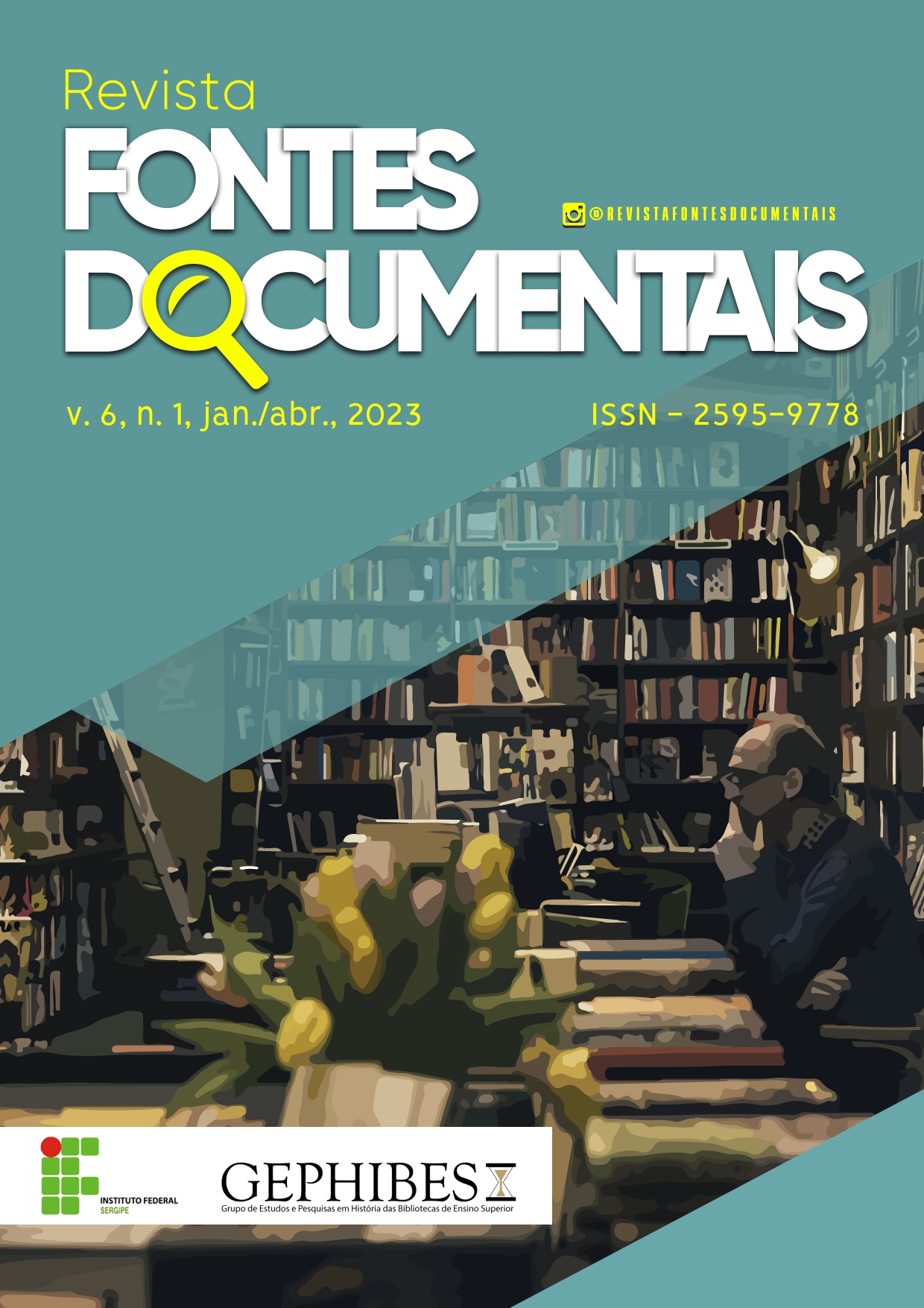Criação da base de dados e mapeamento conceitual para elaboração do tesauro da Literatura de Cordel
Palabras clave:
Literatura de cordel, Semântica discursiva, Análise temática, Representação da informaçãoResumen
Este artigo descreve o processo de criação da Base de Dados Literatura de Cordel, cujos folhetos foram analisados com o objetivo de identificar seus temas e organizar sua estruturação conceitual para a futura elaboração de um tesauro da área. Os cordéis disponíveis na base de dados fazem parte de acervos diversos e são de autoria de poetas populares identificados em pesquisas realizadas anteriormente. A Semântica Discursiva (GREIMAS, 1976) foi o método de análise linguística e textual utilizado para identificar os temas abordados nos folhetos de cordel. As Classes Temáticas para cordéis, criadas por Albuquerque (2011), foram o ponto inicial da análise do corpus da pesquisa e oportunizaram a organização e a demonstração das relações semânticas existentes entre os temas e as figuras encontradas nos folhetos. Como resultado, foram criadas 27 Classes Temáticas, chamadas, neste estudo, de Categorias. Cada uma delas foi desdobrada em subcategorias, com os respectivos conceitos, para auxiliar a representação temática e facilitar a recuperação do folheto de cordel. O estudo viabilizou a construção de uma base de dados em que estão organizados 2.668 títulos de folhetos de cordel representados de modo temático. Com os dados coletados e organizados nessa primeira fase, será possível elaborar o ‘Tesauro da Literatura de Cordel’, próxima ação a ser realizada na pesquisa.
Descargas
Citas
ALBUQUERQUE, M. E. B. C. Literatura popular de cordel: dos ciclos temáticos à classificação bibliográfica. 2011. 321 f. Tese (Doutorado em Letras) – Programa de Pós-graduação em Letras, Universidade Federal da Paraíba, João Pessoa, 2011. Disponível em:
https://repositorio.ufpb.br/jspui/handle/tede/6183. Acesso em: 2 fev. 2022.
BARITÉ, M. G. La garantía cultural como justificación en sistemas de organización de conocimiento: aproximación crítica. Palabra Clave, v. 1, n. 1, p. 2-11, 2011. Disponível em: http://hdl.handle.net/20.500.11959/brapci/60772. Acesso em: 30 abr. 2023.
BERTRAND, D. Caminhos da semiótica literária. Bauru: EDUSC, 2003.
CHAUÍ, M. Cultura e democracia: o discurso competente e outras falas. 3. ed. São Paulo: Moderna, 1982.
DINIZ, M. L. V. P. et al. Semiótica: um novo paradigma para leitura do verbal, não-verbal e sincrético. In: CELLIP - CENTRO DE ESTUDOS LINGÜÍSTICOS DO PARANÁ, 13., 2000, Campo
Mourão. Anais [...]. Campo Mourão, PR: FECILCAM, 2000. Disponível em: http://web. archive.org/web/20100707072214/http://webmail.faac.unesp.br/~mldiniz/publicacoes/ artigo003.html. Acesso em: 30 abr. 2023.
FOUCAULT, M. A ordem do discurso. São Paulo: Loyola, 1996. GREIMAS, A. J. Semântica estrutural. São Paulo: Cultrix/EDUSP, 1976.
LANCASTER, F. W. Indexação e resumos: teoria e prática. 2.ed. Brasília: Briquet de Le- mos, 2004.
PAIS, C. T. Literatura oral, literatura popular e discursos etno-literários. In: BATISTA, M. F. B. M. et al. (org.). Estudos em literatura popular. João Pessoa: Editora Universitária, 2004.
ORLANDI, E. P. (org.) Discurso fundador. Campinas: Pontes, 1993.
SILVA, G. F. (org.). Dicionário Brasileiro de Literatura de Cordel. Rio de Janeiro: Editora Rovelle, 2013.
Descargas
Publicado
Cómo citar
Número
Sección
Licencia
Derechos de autor 2023 Maria Elizabeth Baltar Carneiro de Albuquerque, Gracy Kelli Martins, Raimunda Fernanda dos Santos, Denysson Axel Ribeiro Mota, André Anderson Cavalcante Felipe, Sale Mário Gaudêncio, Eveline Filgueiras Gonçalves, Fabiana da Silva França, Rosane Suely Álvares Lunardelli, Lucélia Mara de Souza Serra, Maria Eduarda Dantas Hardman Urtiga

Esta obra está bajo una licencia internacional Creative Commons Atribución-NoComercial 4.0.
O(os) autor(es) do trabalho submetido a Revista Fontes Documentais declara(m):
- Declaro que participei suficientemente do trabalho para tornar pública minha responsabilidade pelo conteúdo.
- Declaro que o uso de qualquer marca registrada ou direito autoral dentro do manuscrito foi creditado a seu proprietário ou a permissão para usar o nome foi concedida, caso seja necessário.
- Declaro que todas as afirmações contidas no manuscrito são fatos são verdadeiras ou baseadas em pesquisa com razoável exatidão.
- Declaro que os direitos autorais referentes ao artigo agora submetido pertencerão à Revista Fontes Documentais, sendo permitido que outros possam distribuir, remixar, adaptar e criar a partir do deste trabalho, exceto para fins comerciais, desde que atribuído o devido crédito.







